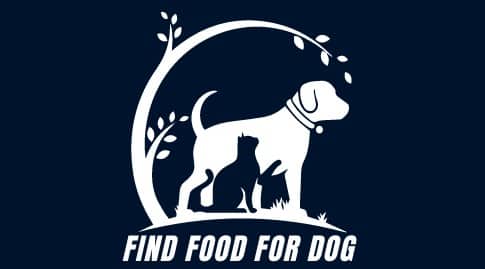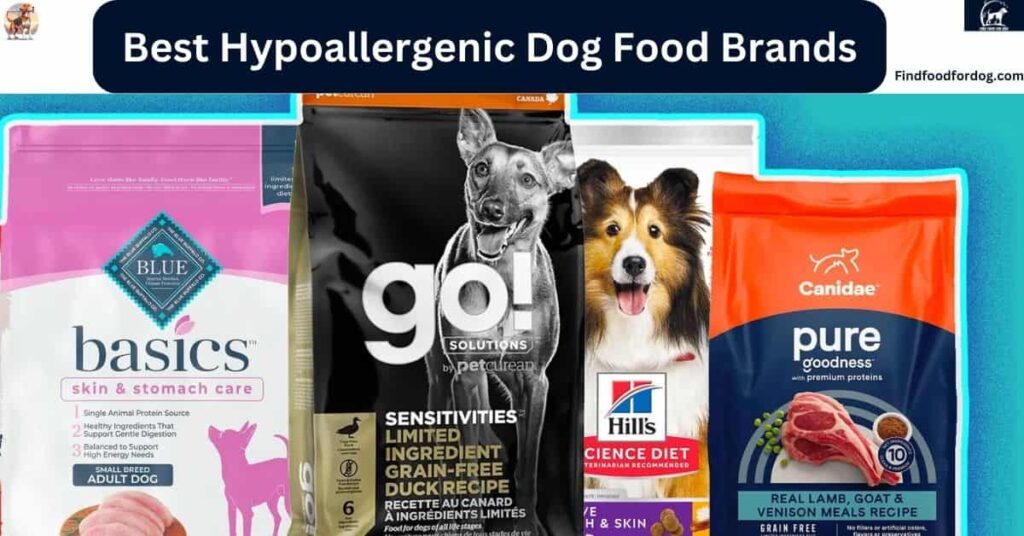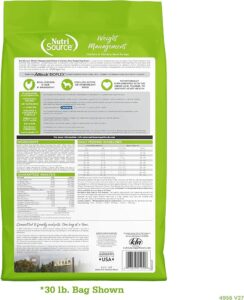The best hypoallergenic dog food often includes limited ingredients, novel proteins, and is grain-free. Brands like Blue Buffalo Basics and Hill's Prescription Diet are popular choices.
Choosing the right hypoallergenic dog food is crucial for pets with allergies or sensitivities. Many dogs suffer from food-related issues that can lead to skin irritations or digestive problems. Hypoallergenic diets aim to reduce these reactions by using specific ingredients that minimize allergens.
These formulas often feature novel protein sources, such as duck or venison, and exclude common allergens like wheat and soy. Selecting high-quality hypoallergenic food can greatly improve your dog's health and overall well-being. Always consult with a veterinarian before making dietary changes to ensure the best choice for your furry friend.
Introduction To Hypoallergenic Dog Food
Hypoallergenic dog food is designed for dogs with food allergies. Many dogs suffer from allergies. These can cause skin problems or digestive issues. Hypoallergenic diets help manage these conditions. They contain limited ingredients and specific proteins. This makes it easier to identify allergens.
Rise In Dog Food Allergies
The number of dogs with food allergies is increasing. Studies show that around 10% of dogs have allergies. Common allergens include:
- Beef
- Dairy
- Chicken
- Wheat
- Fish
Symptoms of food allergies may include:
- Itchy skin
- Ear infections
- Diarrhea
- Vomiting
Owners often seek solutions. They want to improve their dog’s health. Hypoallergenic dog food offers a safe option.
Benefits Of Hypoallergenic Options
Choosing hypoallergenic dog food has many benefits. Here are some key advantages:
- Reduces Allergic Reactions: Less risk of triggering allergies.
- Improves Skin Health: Helps heal and soothe irritated skin.
- Enhances Digestion: Supports a healthier digestive system.
- Increases Energy Levels: Promotes overall vitality and well-being.
Many brands offer hypoallergenic options. These include unique proteins like:
| Protein Source | Example Brands |
|---|---|
| Duck | Royal Canin, Hill's Science Diet |
| Rabbit | Canidae, Blue Buffalo |
| Venison | Orijen, Acana |
These options cater to dogs with specific sensitivities. They provide balanced nutrition while avoiding allergens.

Blue Buffalo
Identifying Common Allergens In Dog Food
Understanding allergens in dog food is vital for your pet's health. Many dogs suffer from food allergies. Identifying these allergens helps you choose the right hypoallergenic food.
Proteins And Grains Culprits
Proteins often trigger allergies in dogs. Common protein sources include:
- Beef
- Chicken
- Lamb
- Fish
Grains can also be problematic. Many dogs react to:
- Wheat
- Corn
- Barley
- Rice
Choose novel proteins or grain-free options for sensitive dogs. Examples include:
| Novel Proteins | Grain-Free Options |
|---|---|
| Duck | Sweet Potatoes |
| Rabbit | Peas |
| Venison | Quinoa |
Additives And Artificial Ingredients
Additives can cause allergic reactions in dogs. Common additives include:
- Preservatives
- Coloring agents
- Flavor enhancers
Many commercial dog foods contain artificial ingredients. These can lead to health issues. Always choose foods with:
- Natural ingredients
- No artificial preservatives
- Simple ingredient lists
Reading labels is essential. Look for limited ingredient diets. These diets reduce the risk of allergens.
Types Of Hypoallergenic Dog Food
Choosing the right hypoallergenic dog food is essential for dogs with food allergies. Different types exist to cater to various needs. Understanding these types helps in making the best choice for your furry friend.
Limited Ingredient Diets
Limited ingredient diets (LID) focus on using fewer ingredients. This approach helps identify allergens easily.
- Fewer Ingredients: Reduces the chance of allergic reactions.
- Easier Digestion: Simplified formulas promote better digestion.
- Common Proteins: Often includes chicken, lamb, or fish.
These diets usually list one protein and one carbohydrate source. This simplicity aids in monitoring your dog's reactions.
Novel Protein Sources
Novel protein sources are unique proteins not commonly found in dog foods. They help avoid allergic reactions from familiar proteins.
- Examples: Kangaroo, venison, or duck.
- Less Likely to Cause Allergies: New proteins reduce allergy risks.
- Variety of Options: Great for dogs with multiple allergies.
Switching to a novel protein can help in finding a suitable diet. Always consult your vet before making changes.
| Type of Hypoallergenic Food | Benefits |
|---|---|
| Limited Ingredient Diets | Fewer allergens, easier digestion |
| Novel Protein Sources | Unique proteins, reduced allergy risks |
:strip_icc()/hillls-dd-canine-potato-and-duck-formula-dry-productShot_zoom-a25d7afed0874f47adb1871c06aaad0f.jpeg)
Hill's Science Diet
Criteria For Choosing The Best Hypoallergenic Dog Food
Choosing the right hypoallergenic dog food is essential for your pet's health. Many dogs suffer from food allergies. Selecting the best options can improve their well-being. Here are the main criteria to consider.
Ingredient Quality
High-quality ingredients are vital in hypoallergenic dog food. Look for the following:
- Real meat sources: Chicken, fish, or lamb as primary ingredients.
- Limited ingredients: Fewer ingredients reduce allergy risks.
- No fillers: Avoid corn, soy, and artificial additives.
- Whole grains: Brown rice or oatmeal support digestion.
Check for quality certifications on the packaging. Brands with clear sourcing practices are often more trustworthy.
Nutritional Balance
A balanced diet is crucial for your dog's health. Look for these features:
- Complete proteins: Ensure the food has essential amino acids.
- Healthy fats: Omega-3 and omega-6 fatty acids support skin health.
- Vitamins and minerals: Essential for overall health and immunity.
- Fiber content: Aids digestion and keeps your dog feeling full.
Consult with your veterinarian. They can help you choose the right nutritional profile for your dog's needs.
Top Hypoallergenic Dog Food Brands
Choosing the right hypoallergenic dog food is crucial for your pet's health. Many brands focus on using quality ingredients. These options cater to dogs with allergies or sensitivities. Here are some top hypoallergenic dog food brands that stand out.
Veterinarian-recommended Brands
Veterinarians often suggest specific brands based on their quality and effectiveness. Here are some well-regarded options:
| Brand | Key Features |
|---|---|
| Hill's Prescription Diet | Formulated for food sensitivities; vet-approved. |
| Royal Canin | Specialty formulas for different breeds; easy to digest. |
| Blue Buffalo Basics | Limited ingredient diet; no chicken or beef. |
| Purina Pro Plan Veterinary Diets | High-quality protein; promotes healthy digestion. |
Customer Reviews And Ratings
Customer feedback is vital in choosing the best dog food. Here are some brands with high ratings:
- Wellness Simple – Great for sensitive stomachs. Highly rated for its quality ingredients.
- Canidae PURE – Minimal ingredients; praised for taste and digestibility.
- Natural Balance L.I.D. – Excellent for dogs with allergies; many positive reviews.
Check product ratings before purchasing. Look for reviews that mention:
- Improved coat condition.
- Increased energy levels.
- Fewer allergy symptoms.
Always consult your veterinarian before changing your dog's diet. This ensures you choose the best food for your furry friend.
Homemade Hypoallergenic Dog Food
Homemade hypoallergenic dog food is a great option for dogs with food allergies. It allows you to control ingredients. This ensures your dog eats safe and nutritious meals. Making your own dog food can be both fun and rewarding.
Creating meals at home can help avoid common allergens. You can tailor recipes to fit your dog's specific needs.
Recipes And Ingredients
Here are some simple recipes to try:
- Chicken and Rice
- 1 cup cooked chicken (shredded)
- 1 cup white rice (cooked)
- 1/2 cup peas and carrots (cooked)
- Beef and Sweet Potato
- 1 cup ground beef (lean)
- 1 cup sweet potato (mashed)
- 1/2 cup green beans (cooked)
- Turkey and Quinoa
- 1 cup ground turkey
- 1 cup quinoa (cooked)
- 1/2 cup carrots (diced)
Always consult your vet before changing your dog's diet. Some dogs may require special ingredients.
Preparation And Storage
Follow these steps for safe preparation:
- Wash hands and surfaces before cooking.
- Cook all meats thoroughly to avoid bacteria.
- Use fresh ingredients to ensure quality.
Store homemade dog food in an airtight container. Keep it in the fridge for up to 3 days. For longer storage, freeze portions in freezer bags.
| Storage Method | Duration |
|---|---|
| Refrigerator | Up to 3 days |
| Freezer | Up to 3 months |
Homemade Dog Food
Label containers with dates. This helps track freshness.
Transitioning To Hypoallergenic Food
Changing your dog's diet to hypoallergenic food can improve their health. This process requires careful planning. A smooth transition helps your dog adjust better.
Gradual Introduction
Start by mixing the new food with the old food. This helps prevent stomach upset. Follow these steps for a smooth transition:
- Day 1-2: Mix 25% hypoallergenic food with 75% old food.
- Day 3-4: Mix 50% hypoallergenic food with 50% old food.
- Day 5-6: Mix 75% hypoallergenic food with 25% old food.
- Day 7: Feed 100% hypoallergenic food.
This gradual method allows your dog's digestive system to adapt. Monitor their response during this period.
Monitoring For Improvement
Observe your dog closely during the transition. Look for positive changes in their health. Note any signs of allergies, such as:
- Reduced itching
- Clearer skin
- Better digestion
Keep a journal to track these changes. This helps you understand if the new food works. Consult your vet for advice if problems occur.
Consulting A Veterinarian
Consulting a veterinarian is crucial for choosing the best hypoallergenic dog food. They can provide insights tailored to your dog's unique needs. A vet's expertise helps identify allergies and recommend the right diet.
Allergy Testing
Allergy testing helps pinpoint specific food allergies. It involves:
- Skin tests
- Blood tests
- Elimination diets
Each method has its benefits. Skin tests provide quick results. Blood tests are less invasive. Elimination diets involve removing certain foods and monitoring reactions.
Testing ensures you avoid ingredients that trigger allergic reactions.
Professional Diet Recommendations
Veterinarians can suggest the best hypoallergenic diets. Consider these common recommendations:
| Diet Type | Description |
|---|---|
| Limited Ingredient Diet | Contains fewer ingredients to reduce allergy risks. |
| Novel Protein Diet | Uses uncommon protein sources to avoid allergens. |
| Hydrolyzed Protein Diet | Breaks down proteins to prevent allergic reactions. |
Take advice from Pet Expert Dr Marty
ESA Pet is an online service that helps you get a legitimate ESA letter
Pet vitamin supplements and grooming products
Each diet type serves a specific purpose. Work closely with your vet to find the right one.
Case Studies And Success Stories
Real-life examples show the positive impact of hypoallergenic dog food. Many dog owners have noticed significant improvements in their pets' health and happiness.
Real-life Improvements
Several dog owners report amazing changes after switching to hypoallergenic diets. Common issues like skin irritations and digestive troubles often improve quickly.
- Max: A Golden Retriever with chronic itching. After changing his food, his skin cleared up within weeks.
- Bella: A Beagle suffering from gas and bloating. Switching her food led to a happy, comfortable belly.
- Rocky: A Poodle with ear infections. His infections decreased significantly after the diet change.
Long-term Benefits
Choosing the right hypoallergenic dog food brings lasting advantages. Many owners see improvements over time that enhance their dogs' quality of life.
| Dog Name | Initial Issue | Time to Improvement | Long-term Benefits |
|---|---|---|---|
| Max | Itching and redness | 3 weeks | Healthier skin and coat |
| Bella | Gas and bloating | 2 weeks | Better digestion and energy |
| Rocky | Frequent ear infections | 1 month | Fewer vet visits |
These stories highlight the power of hypoallergenic dog food. Owners report happier, healthier pets with fewer health issues.

Hill's Science Diet
Frequently Asked Questions About What is the Best Hypoallergenic Dog Food
What Ingredients Should Hypoallergenic Dog Food Contain?
Hypoallergenic dog food typically includes limited ingredients. Look for novel proteins like duck or venison and easily digestible carbohydrates such as sweet potatoes. Avoid common allergens like wheat, soy, and corn. Always check the label for potential allergens specific to your dog’s sensitivities.
How Do I Know If My Dog Needs Hypoallergenic Food?
Signs your dog may need hypoallergenic food include persistent itching, skin irritations, or gastrointestinal issues. If your dog frequently experiences these symptoms, consult your veterinarian. They can recommend dietary changes and possibly conduct allergy tests to identify specific triggers for your pet's reactions.
Can Hypoallergenic Food Help With Dog Allergies?
Yes, hypoallergenic food can help manage dog allergies. It reduces exposure to common allergens found in traditional dog food. By using limited ingredients, it allows you to identify and eliminate specific allergens. However, results may vary, so consult your vet for personalized recommendations.
Are All Hypoallergenic Dog Foods The Same?
No, not all hypoallergenic dog foods are the same. Different brands use various proteins and carbohydrate sources. Some may focus on single proteins while others incorporate multiple ingredients. Always choose a product that suits your dog's specific dietary needs and allergies.
Conclusion
Choosing the best hypoallergenic dog food is crucial for your pet's health. It can reduce allergy symptoms and improve overall well-being. Always consult your veterinarian for personalized recommendations. With the right food, your furry friend can enjoy a happier, healthier life.
Prioritize their needs, and you'll see the difference.














